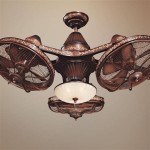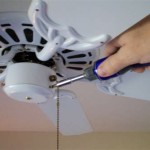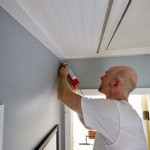Common Ceiling Fan Problems in English Rooms 2024
Ceiling fans have become a ubiquitous feature in many English homes, providing efficient and cost-effective cooling and even heating assistance throughout the year. They offer a subtle aesthetic upgrade over box fans and often integrate seamlessly into various interior design schemes. However, like any mechanical device, ceiling fans are prone to a range of issues that can diminish their performance, create unwanted noise, or even pose safety risks. Understanding these common problems and potential solutions is crucial for homeowners to maintain their ceiling fans and ensure they continue to operate effectively and safely in 2024.
This article will explore the prevalent ceiling fan problems encountered in English rooms during 2024. It will delve into the potential causes of each issue and offer practical advice for troubleshooting and resolving them. While some problems may be easily rectified by homeowners, others require the expertise of a qualified electrician. Recognizing the difference is essential to prevent further damage or potential hazards.
Wobbling Ceiling Fan
One of the most frequently reported issues with ceiling fans is wobbling. A wobbling fan is not only visually distracting but can also be a sign of underlying mechanical problems that, if left unaddressed, could lead to more serious issues. The source of the wobble often lies in an imbalance of the fan blades. This imbalance can be caused by several factors, including dust accumulation, loose screws, warped blades, or improper installation. Over time, dust and grime can accumulate unevenly on the blades, adding weight to one side and throwing the fan off balance.
Another common cause of wobbling involves loose screws. The screws that attach the blades to the blade holders, and the blade holders to the motor housing, can loosen over time due to the vibrations of the operating fan. This looseness allows the blades to shift slightly, creating an imbalance. Periodic tightening of these screws is a simple preventative measure that can significantly reduce the likelihood of wobbling.
Warped blades are another potential culprit. Exposure to humidity or temperature fluctuations can cause the fan blades, particularly those made of wood or MDF, to warp slightly. This warping creates an uneven surface that disrupts the airflow and contributes to the wobbling motion. Replacing warped blades is often the most effective solution.
Improper installation is also a significant contributor to wobbling ceiling fans. If the mounting bracket is not securely attached to the ceiling joist or if the fan is not properly aligned during installation, it can lead to imbalance and wobbling. Ensuring the mounting bracket is securely fastened and the fan is correctly aligned is crucial for preventing this problem. A balancing kit, usually included with the fan, can be used to fine-tune the balance after installation. This kit typically contains small weights that can be attached to the blades to counteract any remaining imbalance.
To diagnose and resolve a wobbling ceiling fan, homeowners should first visually inspect the blades for any signs of warping or damage. They should then carefully tighten all screws that connect the blades to the blade holders and the blade holders to the motor housing. If the wobbling persists, cleaning the blades thoroughly to remove any accumulated dust and grime is recommended. Finally, using a balancing kit can help to fine-tune the balance and eliminate the wobble. If these steps fail to resolve the issue, it is advisable to consult a qualified electrician to assess the installation and identify any underlying structural problems.
Noisy Ceiling Fan Operation
Ceiling fans are designed to operate quietly, providing a gentle breeze without creating excessive noise. However, many homeowners experience noisy ceiling fans, which can be disruptive and annoying. The causes of noisy operation can vary, ranging from simple lubrication issues to more complex motor problems. Identifying the source of the noise is the first step in addressing the problem effectively.
One of the most common causes of noisy ceiling fans is lack of lubrication. The motor of a ceiling fan contains moving parts that require lubrication to operate smoothly and quietly. Over time, the lubricant can dry out or become contaminated, leading to friction and noise. Applying a small amount of appropriate lubricant, such as a lightweight machine oil, to the motor bearings can often resolve this issue. Refer to the fan's owner's manual for specific lubrication instructions.
Loose screws and hardware can also contribute to noise. As with wobbling fans, the vibrations of a ceiling fan can cause screws and other hardware to loosen over time. This looseness can create rattling or buzzing noises. Carefully tightening all screws and hardware, including those on the blade holders, motor housing, and mounting bracket, can often eliminate these noises.
Blade noise is another potential source of unwanted sounds. If the blades are rubbing against each other or against the motor housing, it can create a scraping or clicking noise. Ensuring that the blades are properly aligned and spaced can prevent this type of noise. In some cases, slightly bending a blade may be necessary to eliminate the contact.
Motor hum is a more complex issue that can be caused by several factors. A worn-out motor, a faulty capacitor, or electrical interference can all contribute to motor hum. Diagnosing and resolving motor hum often requires the expertise of a qualified electrician. Replacing the motor or capacitor may be necessary in some cases.
To troubleshoot a noisy ceiling fan, homeowners should first check for loose screws and hardware and tighten them as needed. They should then lubricate the motor bearings according to the manufacturer's instructions. If the noise persists, they should inspect the blades for any signs of rubbing or contact. If these steps do not resolve the issue, consulting a qualified electrician is recommended to diagnose and address any underlying motor problems.
Ceiling Fan Light Problems
Many ceiling fans include integrated lighting fixtures, providing both cooling and illumination. However, these lights can also be a source of problems. Issues with ceiling fan lights can range from simple burned-out bulbs to more complex wiring or control module failures. Understanding the common causes of these problems is essential for troubleshooting and resolving them effectively.
The simplest and most common cause of a malfunctioning ceiling fan light is a burned-out bulb. Replacing the bulb with a new one of the correct type and wattage is usually the first step in troubleshooting light problems. Ensure the power is switched off to the fan before attempting to replace the bulb.
Loose connections in the wiring of the light fixture can also cause problems. Over time, the vibrations of the fan can cause connections to loosen, leading to intermittent or complete loss of light. Carefully inspecting and tightening all wire connections can often resolve this issue. Be sure to disconnect the power to the fan before working on any electrical connections.
A faulty light switch or dimmer switch can also prevent the light from working. If the switch is not functioning correctly, it may not be sending power to the light fixture. Testing the switch with a multimeter can help to determine if it is faulty. Replacing a faulty switch is a relatively straightforward repair that can be done by most homeowners.
Some ceiling fans use a remote control to operate the light and fan functions. If the remote control is not working, it can prevent the light from turning on. Check the batteries in the remote control and replace them if necessary. If the remote control still does not work, it may need to be reprogrammed or replaced.
A more complex issue that can affect ceiling fan lights is a faulty control module. The control module is responsible for regulating the power to the light and fan functions. If the control module fails, it can prevent the light from working or cause it to flicker. Replacing a faulty control module requires some electrical knowledge and skill and may be best left to a qualified electrician.
To troubleshoot ceiling fan light problems, homeowners should first check the bulb and replace it if necessary. They should then inspect and tighten all wire connections. If the light still does not work, they should test the light switch or dimmer switch and replace it if necessary. Finally, they should check the remote control batteries and reprogram or replace the remote if needed. If these steps do not resolve the issue, consulting a qualified electrician is recommended to diagnose and address any underlying control module or wiring problems.

In A World Of Dull Ceiling Fans These 14 Are Actually Pretty Cool Designed

In A World Of Dull Ceiling Fans These 14 Are Actually Pretty Cool Designed

Ceiling Fan Wikipedia

Improving Ventilation In Your Home

Oscillating Fan How To Choose The Best One For Your Home Morrisdirect Co Morris Direct

Fans Of All Types Ceiling Personal Table Exhaust And Many More Goldmedal

20 Best 𝐏𝐎𝐏 𝐂𝐞𝐢𝐥𝐢𝐧𝐠 𝐃𝐞𝐬𝐢𝐠𝐧𝐬 For Hall With 2 Fans

Differences Between Ventilation Fan Vs Exhaust

20 Best 𝐏𝐎𝐏 𝐂𝐞𝐢𝐥𝐢𝐧𝐠 𝐃𝐞𝐬𝐢𝐠𝐧𝐬 For Hall With 2 Fans

In A World Of Dull Ceiling Fans These 14 Are Actually Pretty Cool Designed
Related Posts








